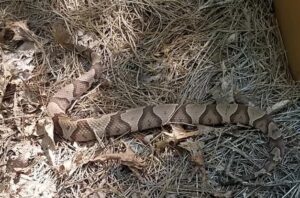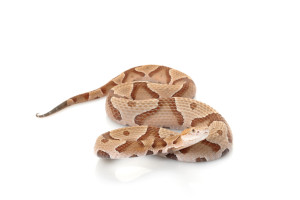The Case For Snakes

Creepy, scary, downright terrifying…that would be my honest description of snakes. Yep, I am not a reptile lover in any form or fashion.
However, and this has been hard-won, however, snakes are not all bad. That’s right. Snakes have a purpose on this earth, and we would do well to recognize and respect that purpose. So what, you might ask, is the case for snakes? Well, I’m glad you asked. Let’s find out!
Snakes look scary, they just do. But the truth is this – most snakes are not harmful. In our home state of Georgia, we have 41 native species of snakes. Of that… larger than I want to think about the number, only 6 varieties are venomous. They are the Eastern Diamondback Rattlesnake, the Timber Rattlesnake, the Pigmy Rattlesnake, the Eastern Coral Snake, the Cottonmouth or Water Moccasin, and the Southern Copperhead. So that leaves 35 kinds of snakes that aren’t dangerous. Of those dangerous snakes, 3 have rattles, one is brightly colored, and the rest can be identified if you know the color patterns and head shape to watch. My honest opinion is that the copperhead is the one I fear the most simply because the camouflage is so good! But pay attention to your surroundings and don’t put your hands and feet in places you can’t see well. And by all means, don’t mess with a snake! Personally, I don’t need this particular reminder. No touchy, touchy for this girl. So the bottom line is this…the majority of snakes are not harmful and absolutely no snake is out to get you.
Snakes are beneficial. You heard me, snakes help us. Snakes are part of nature’s pest control! A single rat snake can eat dozens of rats a year. Do you know what rats cause? Disease. In Vietnam, the rat snake is being recognized as useful in protecting the grain harvest that is the much-needed food supply. In 2014, a study was published in Herpetologica magazine stating that the copperhead population was on the rise. Copperheads, as you recall, are one of the 6 venomous varieties, so this is not comforting news to my mind. The reason for the decline? The loss of the kingsnake population due, in part, to humans. This helpful snake is immune to copperhead and rattlesnake venom and is a natural predator of these dangerous snakes. Loss of habitat, pollution, over the collection of the pet trade, and mindless killing have created a great decline in the kingsnake population.
Now here’s an interesting twist regarding snakes and this current year, 2021. The emergence of Brood X has gained some spotlight as we get ready to see the 13 and 17-year periodical arrival of the cicada swarm. It is totally crazy that these guys have the longest life cycle of any insect. So here’s the situation. These loud insects are going to emerge in May and June throughout the South and up through the Northeast, and some areas will see 1.5 million Cicadas per acre coming up from the ground. Ugh…and yuck…but kind of cool! When this happens, it will be no quiet event. The male insects have a mating call that can reach 100 decibels! That’s kind of amazing. The females will lay up to 600 eggs each in their short lifespan. Incredible nature, right?
 But here’s the concerning part…copperheads love a tasty cicada snack packed with easy to obtain protein. So there is that. Long live the king snake!
But here’s the concerning part…copperheads love a tasty cicada snack packed with easy to obtain protein. So there is that. Long live the king snake!
Bottom line…snakes are not to be messed with and should be respectfully left alone. Georgians should become familiar with the common venomous snakes and be cautious when outdoors. But despite our fear of snakes, we have to remember they are not all bad. Don’t kill the good guys! They protect you. They protect your children. They protect our pets. They protect our food supply.
So this summer, don’t let fear get the best of you. Use some good old common sense and enjoy the beauty of the great outdoors.
https://www.pbs.org/wnet/nature/the-reptiles-snakes-saving-snakes/2911/
https://www.savannahnow.com/article/20100729/NEWS/307299777
https://livingalongsidewildlife.com/?p=2968
https://patch.com/maryland/baltimore/cicadas-swarm-copperheads-yes-its-thing-maryland
By: Tim
